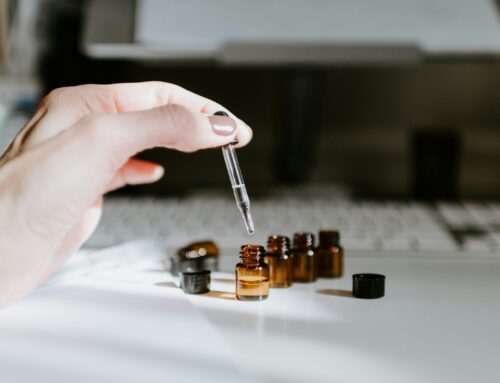In the world of medicinal cannabis, the term “entourage effect” is frequently mentioned, but what exactly does it mean? Simply put, the entourage effect refers to the synergistic interaction between the various compounds found in cannabis, including cannabinoids, terpenes, and other phytochemicals. Rather than working in isolation, these compounds work together to enhance or modify each other’s effects, resulting in a more balanced and potent therapeutic outcome. Understanding the entourage effect is crucial for patients seeking to use medicinal cannabis effectively, as it plays a pivotal role in optimizing treatment for a variety of health conditions.
What is the Entourage Effect?
The entourage effect is a phenomenon where different compounds in medicinal cannabis, such as THC (tetrahydrocannabinol), CBD (cannabidiol), terpenes, and flavonoids, interact with one another to create a more significant or beneficial effect than any single compound alone. This interaction is believed to influence how the body responds to medicinal cannabis, enhancing both its therapeutic potential and overall experience.
The concept was first proposed by researchers in 1998, including Dr. Ethan Russo, who suggested that the various compounds in cannabis have complementary effects that can help treat different symptoms or conditions more effectively. Rather than isolating cannabinoids like THC or CBD for treatment, the entourage effect highlights the importance of using the whole plant, including terpenes and other compounds, to achieve the best therapeutic results.
The Role of Cannabinoids in Medicinal Cannabis
Cannabinoids are the primary active compounds in medicinal cannabis. THC and CBD are the two most well-known cannabinoids, but cannabis contains over 100 different types. Each cannabinoid has its own set of properties and interacts with the body’s endocannabinoid system (ECS), which regulates a range of physiological processes such as mood, pain, appetite, and sleep.
- THC is the psychoactive compound in cannabis that produces the “high” associated with recreational use. However, in medicinal cannabis, THC has a range of therapeutic effects, such as pain relief, anti-inflammatory properties, and appetite stimulation.
- CBD is non-psychoactive and does not produce a “high.” Instead, it has been shown to help with conditions like anxiety, chronic pain, inflammation, and seizures. CBD is also thought to modulate the effects of THC, reducing some of the undesirable psychoactive effects, such as anxiety or paranoia.
When used together, THC and CBD can complement one another, balancing out their effects. This synergy is a central component of the entourage effect. However, it’s not just THC and CBD that play a role in the entourage effect—other cannabinoids, terpenes, and compounds also contribute.
Terpenes: The Unsung Heroes of the Entourage Effect
While cannabinoids like THC and CBD take center stage in the conversation about medicinal cannabis, terpenes are the often-overlooked compounds that are just as critical in creating a well-rounded therapeutic experience. Terpenes are aromatic oils produced by cannabis plants, responsible for the distinctive flavors and aromas of different strains. They can be found in many plants and are common in essential oils.
Terpenes have their own therapeutic properties and can interact with cannabinoids to enhance or modify their effects. For example, some terpenes may promote relaxation or relieve pain, while others might help with inflammation or improve mood.
Common terpenes found in medicinal cannabis include:
- Myrcene: Known for its sedative effects, myrcene is often associated with relaxation and sleep. It can enhance the pain-relieving effects of THC and help reduce inflammation.
- Linalool: Found in lavender, linalool has calming, anti-anxiety, and anti-inflammatory effects. It can work synergistically with CBD and THC to reduce anxiety and promote a sense of calm.
- Caryophyllene: This terpene is unique in that it can bind directly to the CB2 receptors in the endocannabinoid system. It is known for its anti-inflammatory and pain-relieving properties.
- Pinene: As the name suggests, pinene is found in pine trees and has anti-inflammatory and bronchodilator properties, making it useful for patients with respiratory issues.
When terpenes and cannabinoids interact, they can produce a more balanced and effective therapeutic effect, making them an essential part of the entourage effect.
The Synergy of Cannabinoids and Terpenes in the Entourage Effect
The entourage effect highlights the fact that medicinal cannabis is most effective when all of its components work together, rather than in isolation. When cannabinoids and terpenes are consumed together, their effects can be magnified. For example:
- THC and CBD: As mentioned, CBD can temper some of the psychoactive effects of THC, such as anxiety or paranoia. This makes high-THC strains more tolerable for patients who may be sensitive to THC, while still providing the therapeutic benefits of both cannabinoids.
- CBD and Terpenes: CBD’s therapeutic effects can be enhanced by terpenes like linalool and myrcene, which are known to promote relaxation and reduce inflammation. For patients using medicinal cannabis to manage anxiety or insomnia, these combinations can offer a more targeted and effective treatment.
- THC and Terpenes: Certain terpenes, such as limonene and pinene, can enhance the uplifting effects of THC, making it beneficial for mood enhancement or daytime use. Meanwhile, terpenes like myrcene can complement THC’s sedative effects, making it ideal for evening use or patients seeking pain relief and relaxation.
The entourage effect is crucial because it offers a personalized and holistic approach to treatment. A strain of cannabis with a well-balanced mix of cannabinoids and terpenes can be far more effective than one that is high in THC but lacks the complementary compounds that contribute to its overall effect.
Why the Entourage Effect Matters for Medicinal Cannabis Patients
For patients using medicinal cannabis, understanding the entourage effect can make a significant difference in the effectiveness of their treatment. Focusing solely on the percentage of THC or CBD in a product might not provide a complete picture of how the medication will affect them. Instead, looking at the entire cannabinoid and terpene profile is a more holistic approach to determining which cannabis strain or product will best meet their therapeutic needs.
The entourage effect also explains why some patients may find relief with certain cannabis strains or products, while others may not experience the same benefits. Different people can respond to cannabinoids and terpenes in various ways, meaning the best medicinal cannabis treatment is one that is tailored to the individual.
Furthermore, the entourage effect is important when it comes to managing side effects. For example, the potential for THC to cause anxiety or paranoia in some users can be mitigated by the presence of CBD and specific terpenes like linalool or terpinolene. By focusing on the entourage effect, healthcare providers can better guide patients toward the most suitable cannabis products for their specific conditions, reducing the trial and error often associated with cannabis treatments.
How Terpenes and Cannabinoids Are Added to Medicinal Cannabis
In the cultivation of medicinal cannabis, growers can manipulate the terpene profiles of the plants by selecting specific strains, using breeding techniques, and controlling environmental factors such as light, temperature, and humidity. Some growers also add terpenes to cannabis products after harvesting, using a method known as “terpene infusion” to enhance or modify the effects of the strain.
These techniques allow for the creation of tailored medicinal cannabis products that can meet the specific needs of patients, whether they are seeking pain relief, help with sleep, or mood enhancement. The understanding of the entourage effect enables growers and manufacturers to optimize the therapeutic potential of medicinal cannabis.
Conclusion
The entourage effect is a key concept in the world of medicinal cannabis. It underscores the importance of the entire cannabis plant in therapeutic treatments, rather than focusing solely on THC or CBD. By considering the full spectrum of cannabinoids, terpenes, and other compounds, patients can enjoy more effective, personalized, and well-rounded treatments.
Whether you’re using medicinal cannabis to manage pain, anxiety, insomnia, or other health conditions, understanding how cannabinoids and terpenes work together will help you make more informed decisions about your treatment. The entourage effect highlights the power of cannabis as a holistic medicine, where all of its components work in harmony to support health and wellness.








